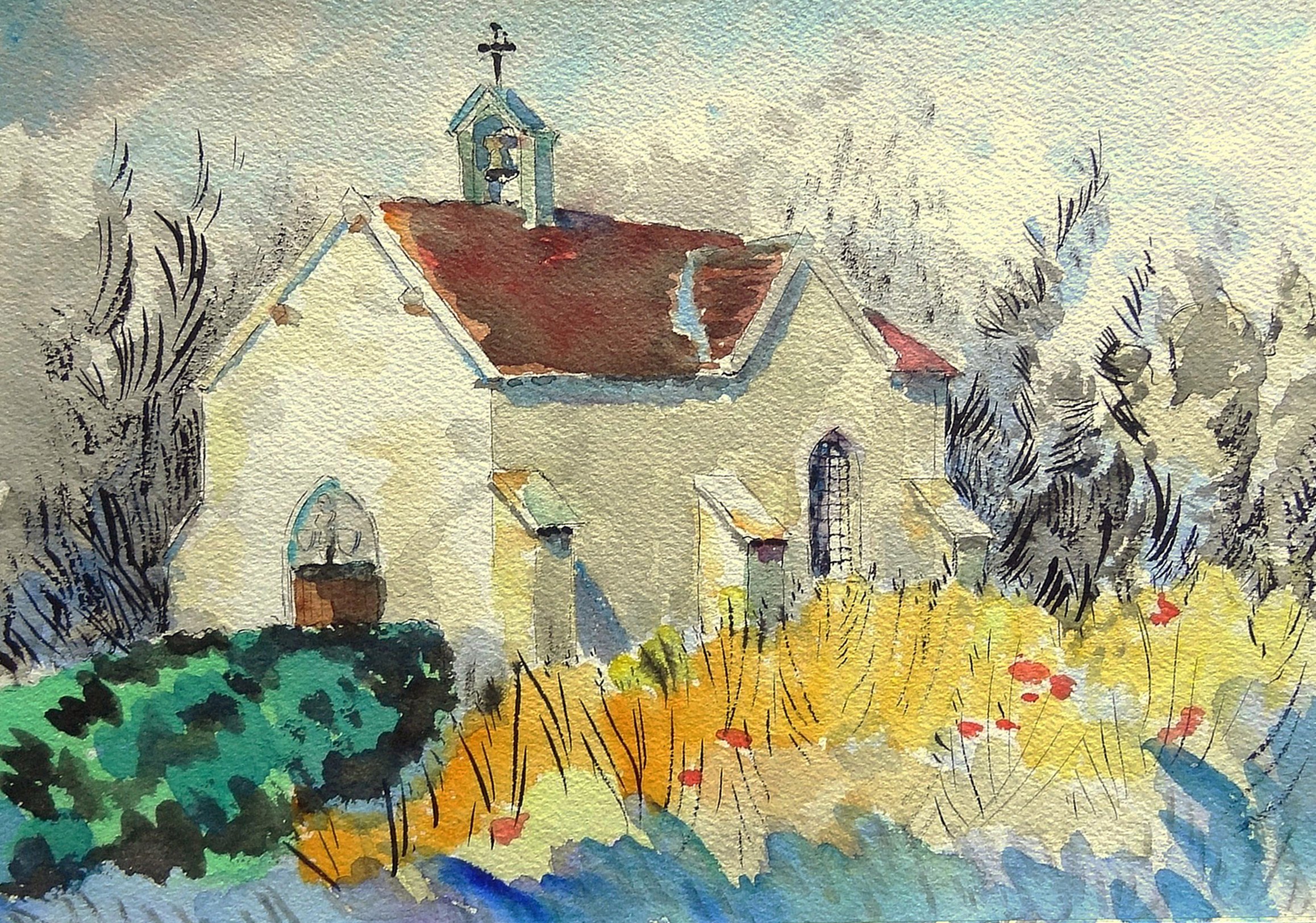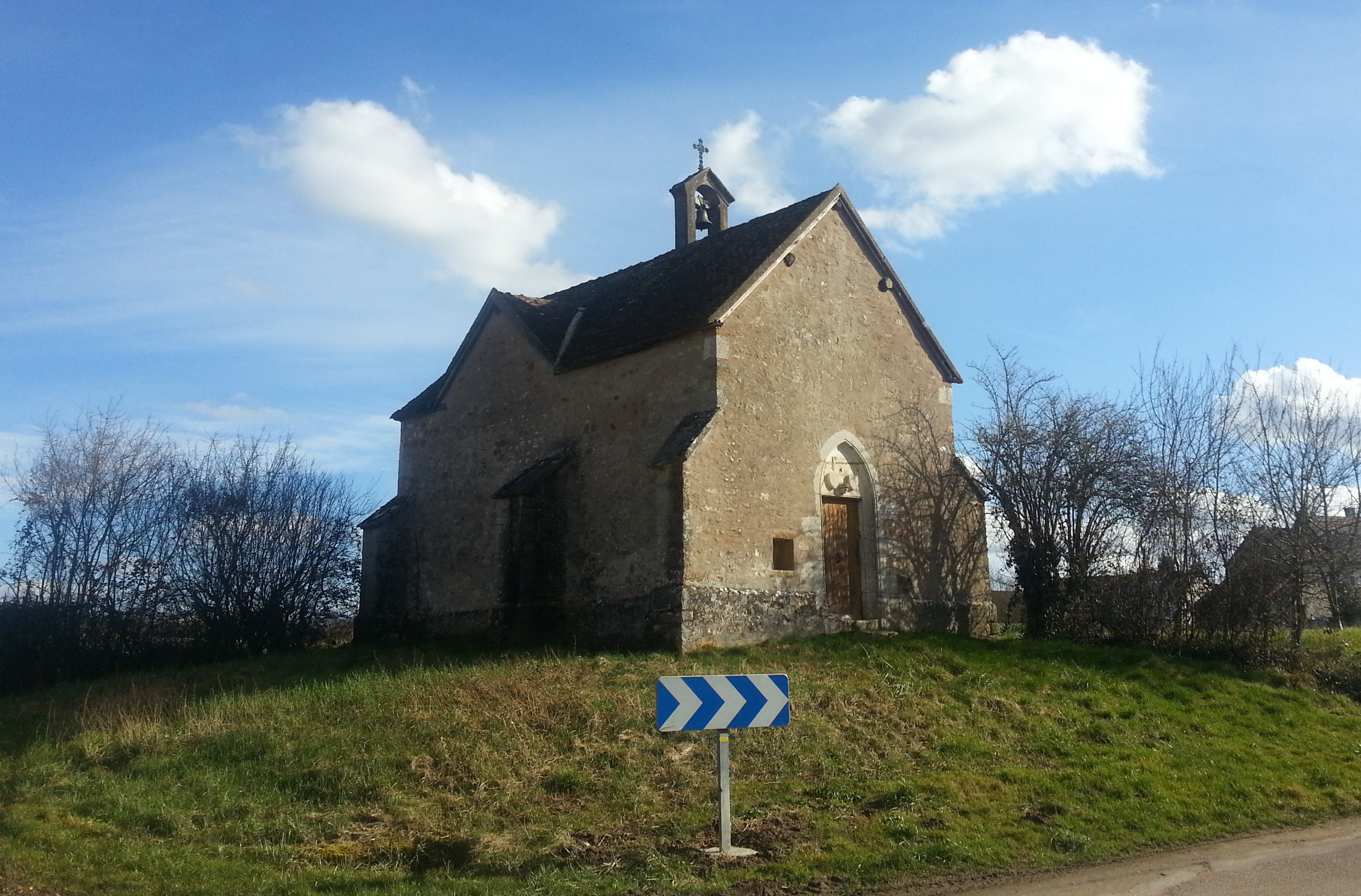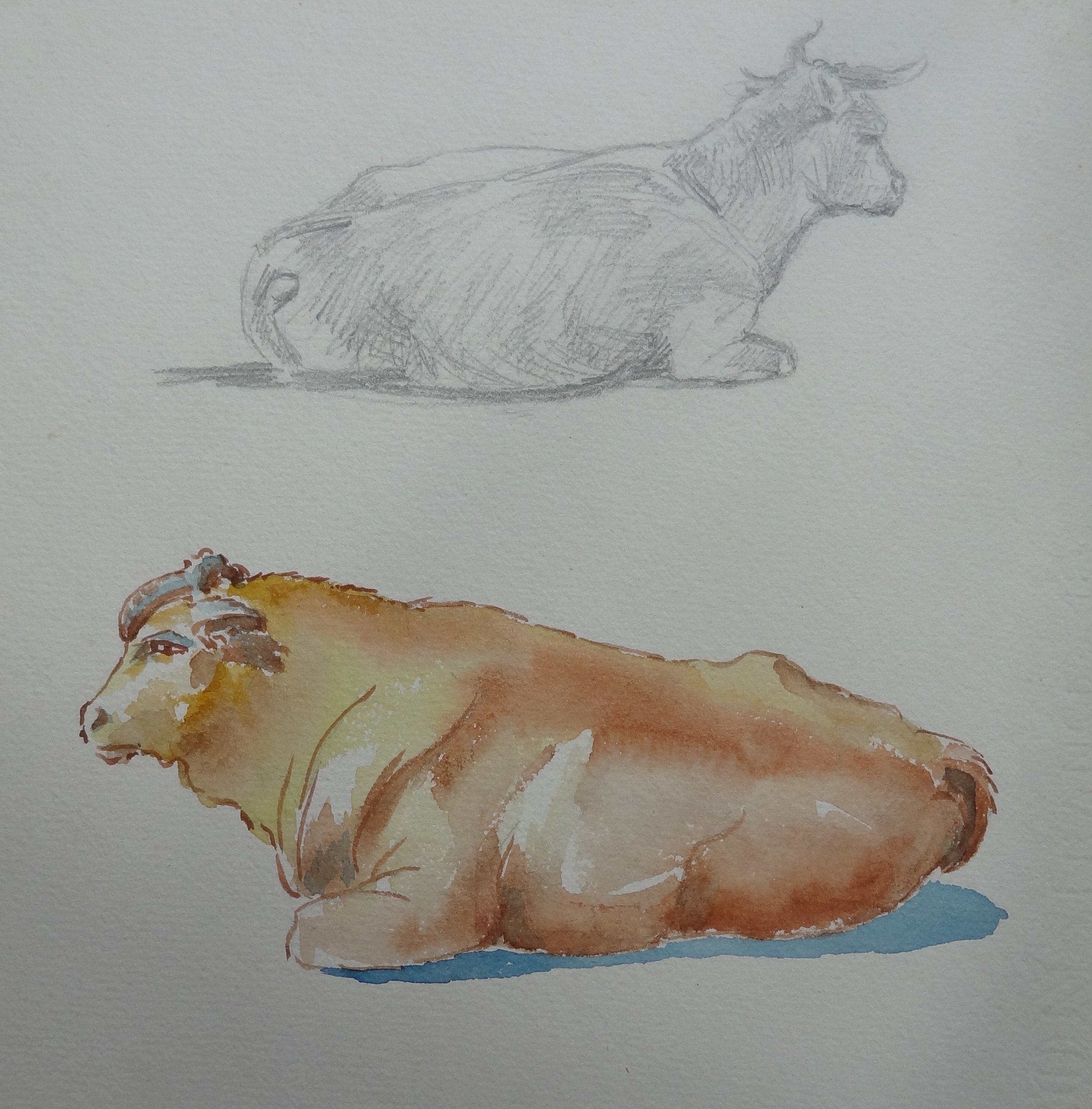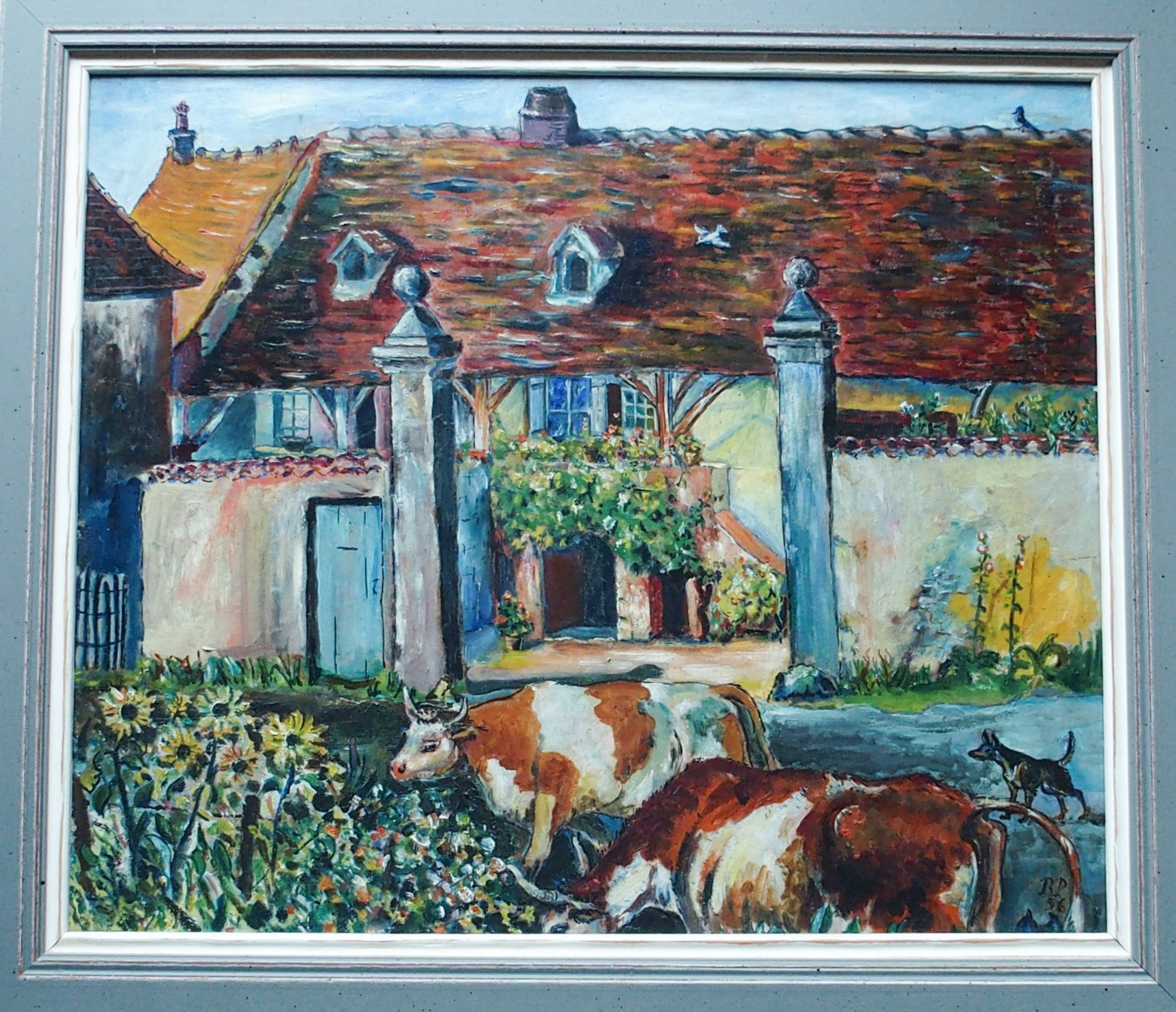My great-grandfather was born in 1894 into a bourgeois family where drawing was a part of the rigorous education he received. His life became somewhat difficult as, like most men growing up during these times, he was sent to fight in the First World War from 1914 to 1918 as a "poilu" (name given to infantry soldiers in the French army). And later the Second World War (1939 - 1945), which he fought after being forced to abandon his hotel/restaurant in Creil (North of Paris) as the Germans had requisitioned him. He then found himself on the demarcation line in Burgundy and became a farmer in order to meet the needs of his family.
One day I will tell you more about his life as it is definitely worth sharing bits and pieces of his journey.
When he retired, he found his drawing pencils again, taught himself the methods of watercolor and oil painting, and began to draw and paint. I should say "amongst others" because he also loved photography, literature, philosophy, going on long nature walks, sociology, politics and so much more. To this creative personality must be added an authoritarian and sometimes violent nature which were the results, according to the family, of the physical and psychological wounds he had experienced during World War 1.
The drawings and paintings that follow reflect in three different categories the style of his works.
Watercolors


This is the chapel of Ponneau, built in 1447 and depicted here on a warm Summer day, in 1962.
To the left of the entrance door, in a small niche, is a small statuette made of stone, which was found in a nearby field of Ponneau. Above it, is another statue representing St Sebastian dating from the sixteenth century.
Here is what the chapel looks like today, from a slightly different angle. Definitely not as pretty as the painting he made!

Drawings

My great-grandfather made many sketches of cows and horses throughout the 50's and 60's.
Animals have always been a challenging subject to draw for artists wanting to master movement and anatomy. Since my great-grandfather lived on a farm, he had plenty of time to study and practise drawing various types of animals, from different angles and postures.
Here are a few examples of the sketches he made, using pencil, pen and even watercolors to help enhance their robust features and poses.

Oil on canvas

My great-grandfather must have painted this house at least 3 times using oil painting. We have also found one watercolour version of it, as well as quite a few drawings.
He liked to draw and paint the houses in his region - typical houses in the Southern region of Burgundy were built in order to easily adapt to the local weather and temperatures, using materials found in the area, and with a certain taste for esthetics:
Very long and wide tile roofs to protect the living areas from the heat. Main structures made of stone to keep the temperatures cool in the hot summer months and well insulated in Winter. A wine cellar can almost always be found at the lowest and coolest part of the house. Most of these houses were built in the 19th century (or earlier), sometimes renovated and still used to this day.
At the time this painting was made (in 1956), there were very few cars on the road you see in the foreground (maximum 20 a day). The cows are returning from the meadow to go to the stables and be milked. As they pass, they are seen grazing on the grass near the sidewalk. The dog keeps a close watch and makes sure they do not wander off too far away.


_edited.jpg) The treasures left behind by my great-grandfather #2 |  FOOD - nom nom nom |
|---|---|
My mom's on STEEMIT! |  Winter Wonderland 2 |
“Learning is not a race for information, it is a walk of discovery” - Jane Healy

